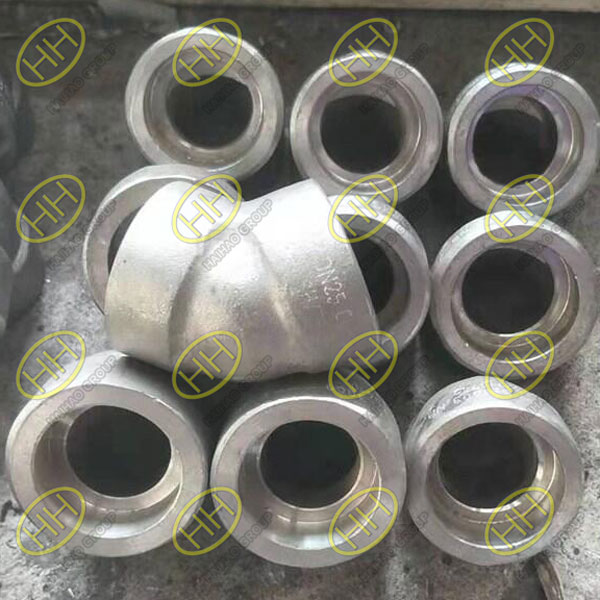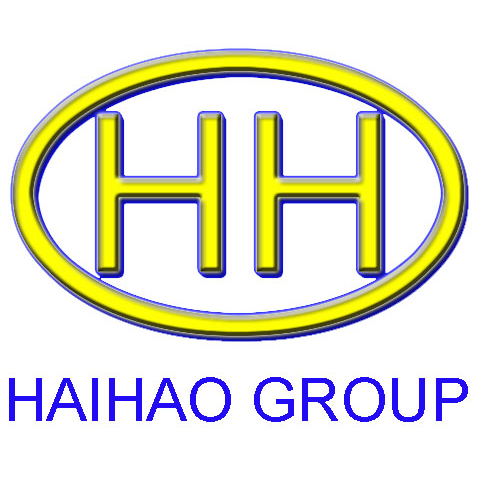What are ASME B16.11 DN 25 Cl.3000 ASTM A182 Gr.F304/304L 45° elbows?
The ASME B16.11 DN 25 Cl.3000 ASTM A182 Gr.F304/304L 45° elbows are essential components in high-pressure and high-temperature piping systems. These elbows are designed to provide a reliable and durable solution for changing the direction of flow within pipelines, making them a critical element in various industrial applications. Manufactured to meet stringent standards, these fittings ensure optimal performance and safety. The combination of the ASME B16.11 standard, the robust Cl.3000 pressure rating, and the high-quality ASTM A182 Gr.F304/304L stainless steel material guarantees excellent corrosion resistance, strength, and versatility. Whether in the oil and gas industry, chemical processing, or power generation, the ASME B16.11 DN 25 Cl.3000 ASTM A182 Gr.F304/304L 45° elbows are the preferred choice for engineers seeking reliable and efficient piping solutions.This particular elbow is made from stainless steel grade F304/304L, conforming to the specifications set forth by the ASTM A182 standard. Here’s a detailed look at what each component of this description means:

ASME B16.11 ASTM A182 F304 304L 45° elbows
ASME B16.11: This standard covers forged fittings, including elbows, tees, couplings, unions, and caps, designed for high-pressure applications. It specifies the dimensions, tolerances, and materials for these fittings, ensuring they are suitable for high-pressure service.
45° Elbow: The elbow has a 45-degree bend, allowing the pipeline to change direction by 45 degrees. This is useful in systems where a gentle change in direction is needed.
DN 25: DN stands for “Diameter Nominal,” which is the international designation for nominal pipe size. DN 25 corresponds to a nominal diameter of 1 inch.
Cl.3000: This indicates the pressure class of the fitting. Class 3000 fittings are designed to withstand high-pressure applications up to 3000 psi.
ASTM A182 Gr.F304 / 304L: This specifies the material of the fitting. ASTM A182 is a standard specification for forged or rolled alloy and stainless steel pipe flanges, fittings, valves, and parts for high-temperature service. Grade F304 is a common stainless steel, and 304L indicates a low-carbon version of 304, providing improved weldability.
Connection Methods for Elbows
Elbows, including the ASME B16.11 45° elbow, can be connected to the piping system using various methods, each with its characteristics and applications. Here are some common connection methods:
1.Socket Welded
In socket welding, the pipe is inserted into a recessed area of the fitting. The fitting and pipe are then welded around the outside. This method provides a strong and leak-resistant joint and is typically used in high-pressure systems.
Features:
Suitable for small diameter pipes (usually up to DN 50 or 2 inches).
Provides a strong and permanent joint.
Requires skilled welding.
Allows for easy alignment before welding.
2.Threaded (Screwed)
Threaded connections involve screwing the pipe into the fitting. This method is often used for low-pressure applications and systems that need to be dismantled for maintenance or reconfiguration.
Features:
Easy to install and disassemble.
No welding required.
Suitable for lower pressure systems.
Risk of leakage over time due to thread wear and loosening.
3.Butt Welded
In butt welding, the pipe and fitting are aligned end-to-end and welded together. This method is used for larger diameter pipes and high-pressure applications, providing a smooth inner surface and strong joint.
Features:
Suitable for high-pressure and high-temperature applications.
Provides a smooth inner surface, reducing flow resistance.
Requires precise alignment and skilled welding.
Creates a permanent joint.
Characteristics of ASME B16.11 45° Elbows
High-Pressure Resistance: Designed to withstand pressures up to 3000 psi, making them suitable for demanding industrial applications.
Corrosion Resistance: Made from stainless steel grades F304 / 304L, these elbows offer excellent resistance to corrosion and oxidation, ensuring longevity and reliability.
Versatility: The 45-degree angle allows for flexibility in pipeline design, enabling smooth changes in direction without causing significant pressure drops or flow disruptions.
Standardization: Adherence to ASME B16.11 ensures compatibility and uniformity across different piping systems and fittings, simplifying installation and maintenance processes.
The ASME B16.11 DN 25 Cl.3000 ASTM A182 Gr.F304/304L 45° elbow is an essential component in high-pressure piping systems, offering strength, durability, and flexibility. Understanding the various connection methods helps in selecting the right fitting for specific applications, ensuring optimal performance and reliability of the piping system.

